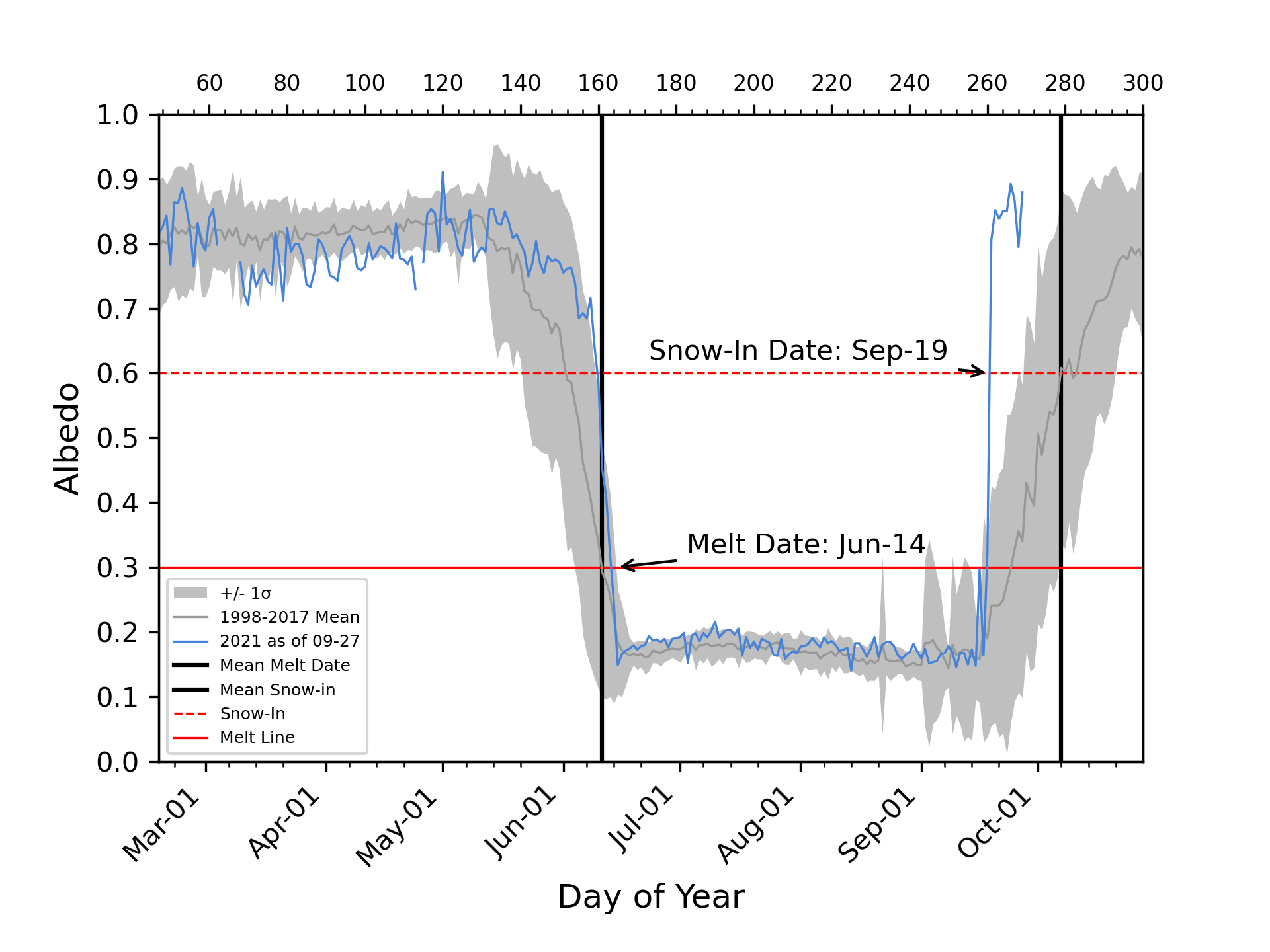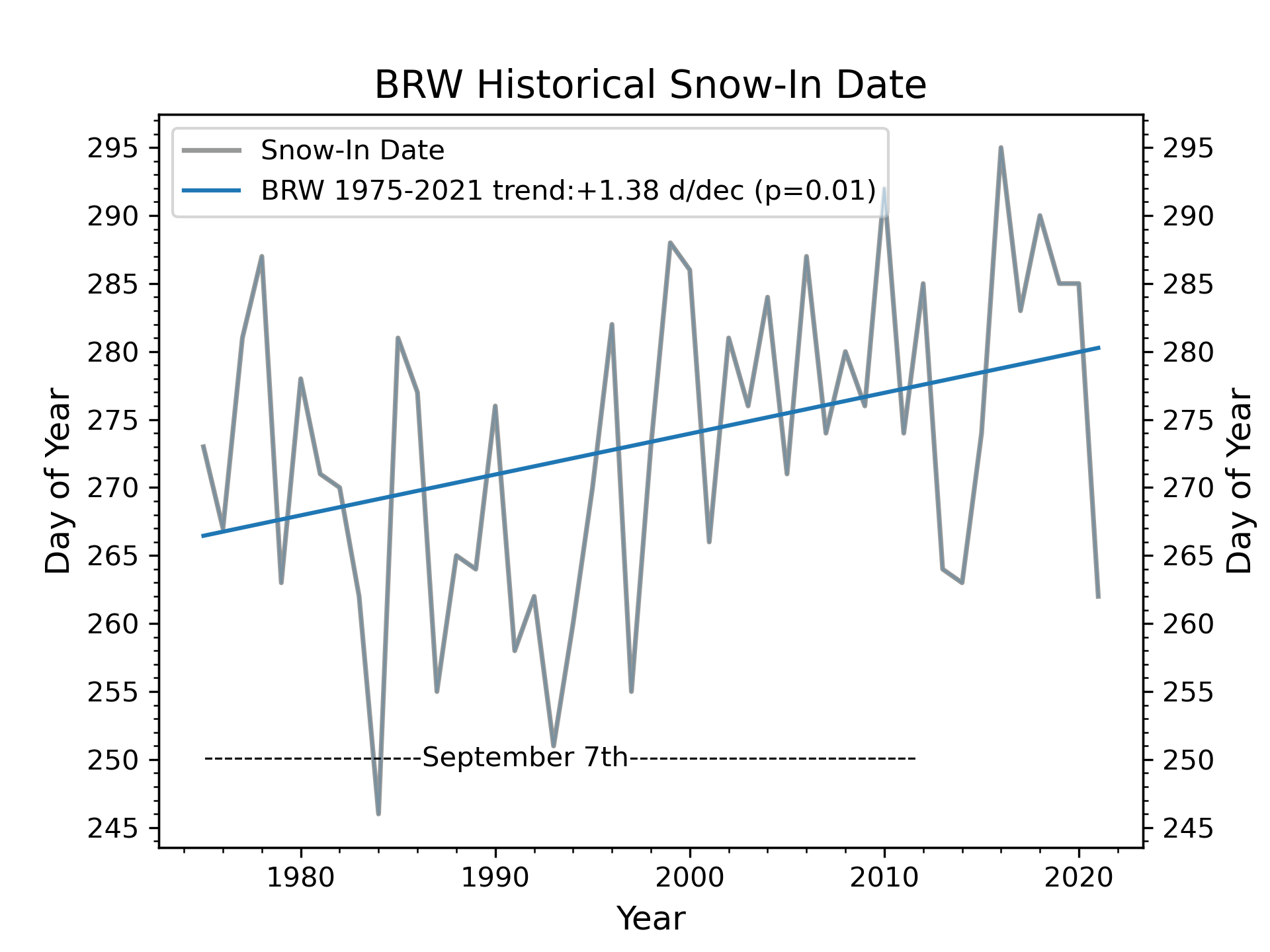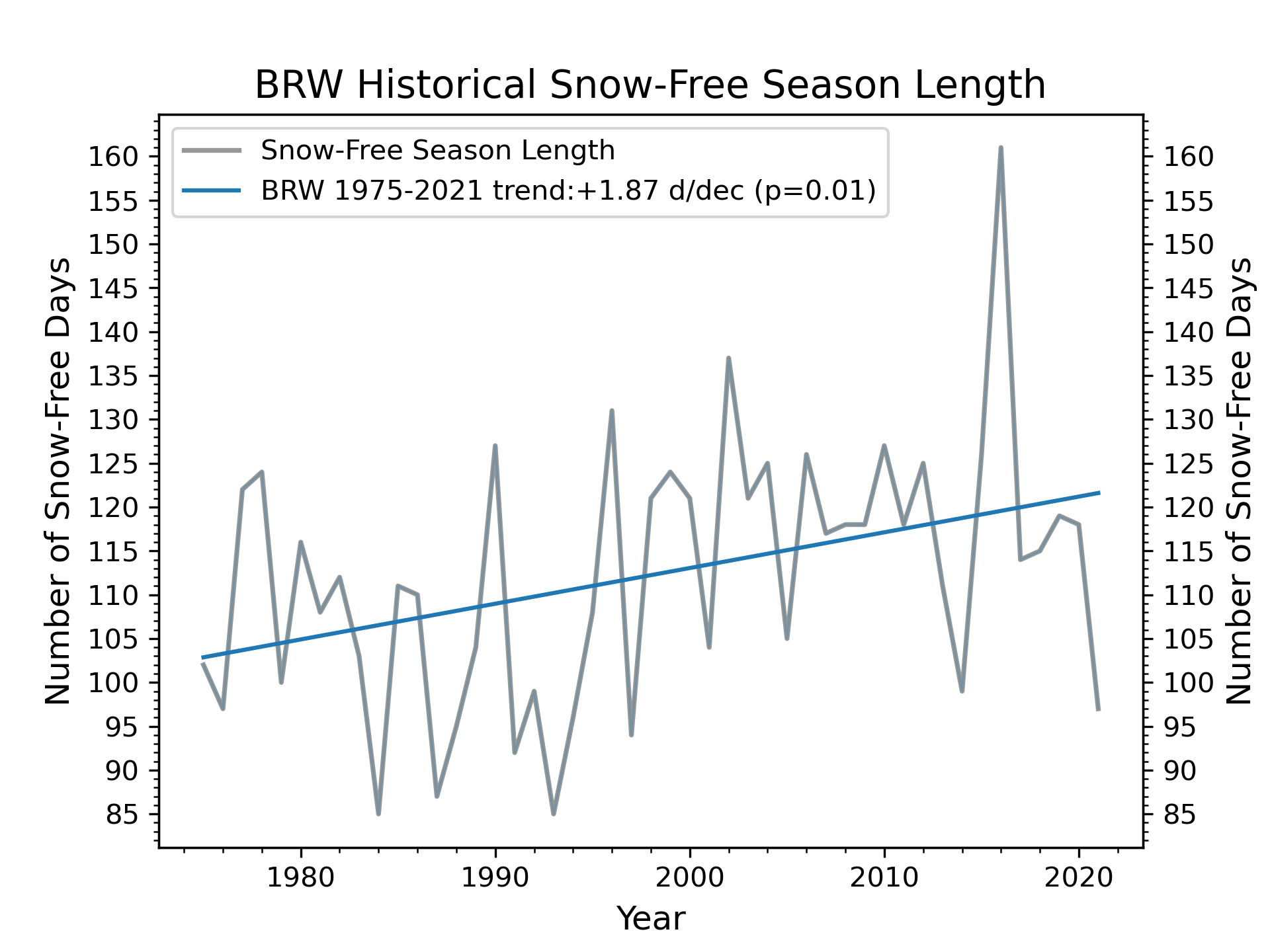An Early End to the 2021 Snow-Free Season in the Arctic
On September 19, 2021, the daily mean surface albedo at GML Barrow Atmospheric Baseline Observatory reached an albedo value greater than 0.6, indicating the end of the snow-free season in Utqiaġvik, Alaska.

The snow-in date is the earliest snow-in date since 1997 and the 7th earliest since 1975 when snow-in determination started at Barrow Observatory using albedo measurements.
With the snow-melt date being reached on June 14, 2021, and a snow-in date reached on September 19th, 2021, the length of the 2021 snow-free season is 97 days. This snow-free season length ties 1976 as the 8th shortest snow-free season since 1975.
The Arctic is one of the places on Earth where climate change is experienced most strongly. Understanding the surface heat budget is one important piece of understanding Arctic climate change.
Since the mid-1980s, Barrow Observatory has been monitoring for the snow-free season, with the National Weather Service providing data since 1921 and a few observations from cooperative programs dating back to 1902.
The daily mean surface albedo measures the average proportion of the incident radiation that is reflected by a surface. While fresh snow has a high albedo (0.8-0.9), the tundra beneath has a very low albedo (0.15-0.25). Longer periods of low albedo in the Arctic indicate a longer snow-free season, which traps more heat at the surface.
It is not yet clear what the earlier snow-in date and shorter snow-free season this year imply. Data will need to be analyzed in the context of the long-term record to sort out the variability and investigate the drivers of the snow-free season.
Since the mid-1970s, there has been a significant trend towards earlier snowmelt. The length of the snow-free season at the Barrow Observatory has increased dramatically since the late 1970s. Incident radiation absorbed by the Arctic ground during a longer snow-free season amplifies the warming experienced in the Arctic, which in turn prolongs the snow-free season.
GML’s long-term effort in measuring surface albedo makes it possible to track snow-free seasons in the Arctic. Radiometric measurements are taken from a 10-m tall tower at Barrow Observatory, below cloud layers, and thus avoiding the challenges of distinguishing clouds from snow experienced by satellites. The live camera provides information about the spatial context of the snow cover, validating the surface albedo data which only assesses the snow cover situation at one location.
The long-term record at Barrow helps scientists understand the causes and impacts of climate change in the Arctic. As thawing permafrost releases methane and other greenhouse gases into the atmosphere and melting sea ice clears out shipping routes in the Arctic Ocean, this data has become increasingly important in answering questions that scientists and policymakers have regarding our future climate.


